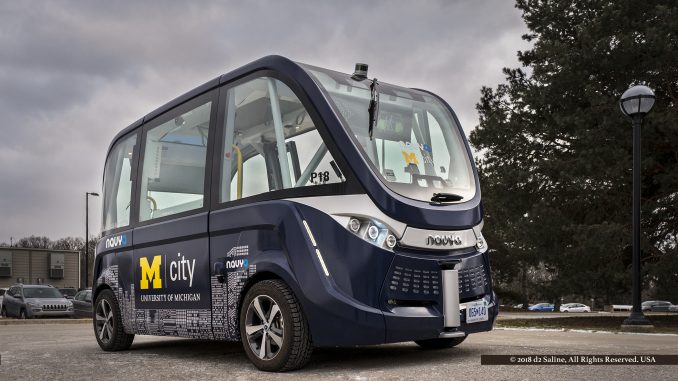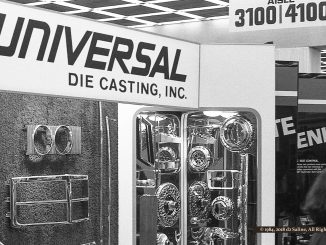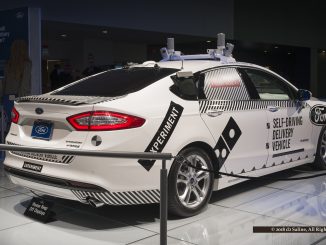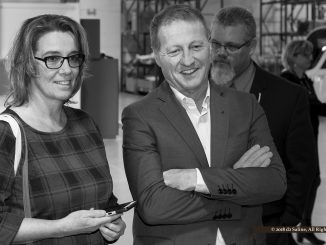
Local autonomous vehicle manufacturer NAVYA made its inaugural showing at the North American International Auto Show (NAIAS) in Detroit last month. [1,2]
This is a big deal for the company and a big deal for Saline.
A little over six months ago, NAVYA announced the planned opening of a 20,000 square foot facility for the City of Saline. Today that plant is literally in the process of producing its first commercial shuttle, due for completion later this month. [3]
Worldwide production of 150 units is projected for 2018 — with 60 of those shuttles to be made right here in Saline Michigan.
NAVYA is a French company and 65 of its self-driving vehicles are currently in service worldwide. As of January 1, 2018 these transports have moved some 270,000 passengers. By 2035, the total market for shuttles such as these is expected to be worth more than $515 billion. [4]
The company goal for NAIAS 2018 was to communicate the message that this technology is here, today; it’s in production and deployed to market. “This is the future of the industry,” Aaron Foster, Business Development Manager for North America told the Saline Journal.
As part of the North American International Auto Show “Automobiliti-D” showcase, NAVYA displayed one of its student transports from the University of Michigan at Ann Arbor — their first customer in North America. Two units will begin operation moving people around campus this April. [5]
Proximity to UofM was a factor in the selection of Saline for the first NAVYA operation outside of France. [6]
NAVYA shuttles are used for what’s called “micro-mobility.” They are best suited to supplement venues where a well-utilized public transit infrastructure is already in place. Think high flow of traffic, covering shorter distances.
Mr Foster refers to this as “first and last mile mobility” and adds that a route of between one-half and two miles is the “sweet spot” here, Mr Foster explained. They pick up where buses leave off, extending reach into neighborhoods, industrial parks, and retirement communities.
An event application such as our annual Celtic Festival here in the City of Saline would be ideal. The distance from off-site visitor parking at Saline Middle School to its venue parking lot in Mill Pond Park is 1.6 miles. [7]
Specifications for the NAVYA transport include a top speed of 27 MPH, typically running at 15 to 20 miles per hour. Shuttles are also 100% electric, operating continuously for nine hours per charge.
Over the course of my own experience in marketing, I’ve seen countless examples of the value delivered by trade shows for exhibitors looking to gauge consumer interest and affect industry change.
This year at Cobo Center in Detroit, Aaron Foster saw nothing but excitement.
“People want to see these shuttles in their cities,” he said.
References
- NAVYA (home page).
- North American International Auto Show (home page).
- “Driverless-shuttle maker to set up in Saline” Jim Lynch (July 17, 2017) The Detroit News.
- “Operating services” NAVYA.
- “Automobilei-D” (January 14-21, 2018) North American International Auto Show.
- “Contact” NAVYA.
- Saline Celtic Festival (home page).
Hashtag
#AutonomousVehicles



